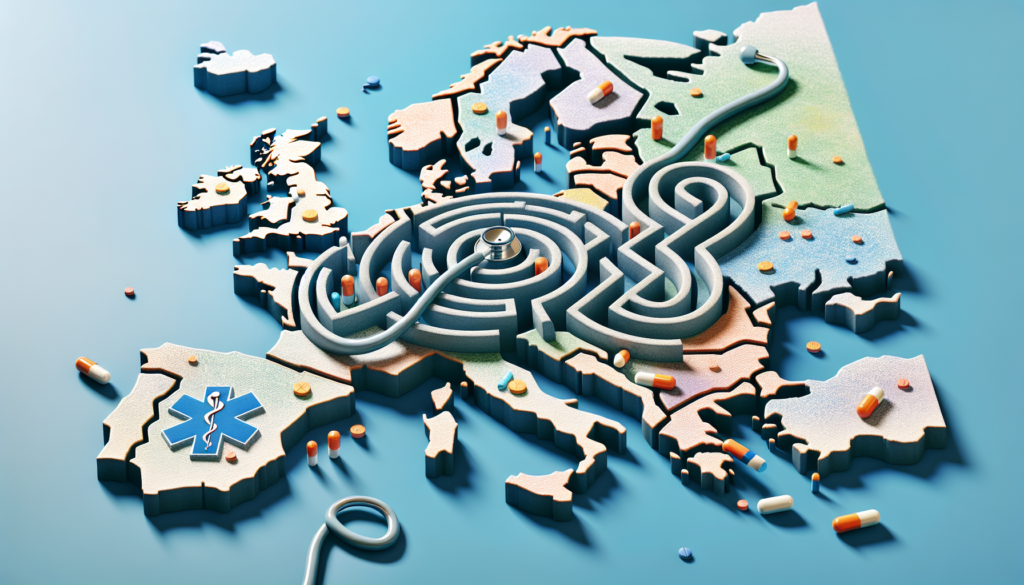Introduction to Europe’s Prescription Landscape
In a region as diverse as Europe, the landscape of cross-border prescriptions is defined by a complex amalgam of healthcare systems, regulations, and processes. For patients, navigating this prescription maze safely can be daunting, yet it’s essential for ensuring continuity of care while traveling or relocating within the continent. Whether you’re a local patient, an expatriate, or a traveler, understanding how to fulfill prescriptions across European borders is crucial for maintaining your health and well-being.
Understanding the European Prescription Framework
The legal framework for fulfilling prescriptions in Europe varies significantly from country to country. Despite efforts to harmonize practices across the EU, individual nations maintain their own sets of rules, which can impact how prescriptions are written, validated, and processed.
European Health Insurance Card (EHIC)
The European Health Insurance Card (EHIC) is a cornerstone in facilitating access to medically necessary, state-provided healthcare, including prescription medications, during temporary stays in EU countries. This card ensures that patients receive the same level of care as local citizens, but it doesn’t cover all aspects of healthcare, particularly specialty medications or complex treatments.
Regulations on Prescription Drugs
European Union regulations strive to ensure that medications available across member states meet rigorous safety and quality standards. However, prescription fulfillment may be subject to local variances:
- Country-specific list of approved medications.
- Prescription validity duration may differ between nations.
- Standardization efforts through the European Medicines Agency (EMA) guide but do not control local regulatory practices.
The Process of Fulfilling a Prescription Across Borders
When seeking to fulfill a prescription in another European country, understanding the procedural nuances is critical. The process often entails translation, verification, and adjustment to local practices.
Prescription Translation and Verification
Upon presenting a prescription in a foreign European country, pharmacies may require a translated document for verification purposes. This ensures that local pharmacists fully understand the medication’s dosage and purpose. In some instances, they might consult with a local healthcare provider to validate the prescribed treatment’s appropriateness.
Local Pharmacy Practices
Pharmacies in Europe play a pivotal role in the prescription fulfillment process. Their practices can vary based on national regulations, including:
- Mandatory patient consultations before dispensing certain medications.
- Requirement for additional documentation, such as a European Prescriptions Form.
- Pharmacists’ discretion to substitute generic drugs when appropriate.
Challenges and Opportunities
While the prospect of fulfilling cross-border prescriptions poses challenges, it also opens avenues for opportunities and improvements.
Challenges in Prescription Fulfillment
Patients often face hurdles such as language barriers, high medicine costs, and legal restrictions on controlled substances. Being aware of these potential issues can aid in preparation and navigation.
Opportunities for Seamless Processes
There are ongoing efforts to streamline cross-border healthcare within the EU. The rising adoption of digital health initiatives, such as electronic prescriptions (e-prescriptions), is gradually making this process more seamless, intending to eliminate paper trails and reduce errors.
Conclusion: Safeguarding Your Health
For individuals navigating Europe’s prescription landscape, being informed and proactive can mitigate challenges and ensure a smoother experience. It’s vital to understand each country’s regulations, consider the logistical aspects of healthcare provisions, and stay informed about ongoing efforts to harmonize healthcare across the continent.
Summary
Navigating Europe’s prescription maze involves understanding the intricate and varying regulations within each country. Patients must tackle challenges such as translation, verification, and pharmacy practices to successfully access the medications they need. While challenges exist, there are opportunities for improvement through electronic prescriptions and policy harmonization. This guide emphasizes the importance of preparedness and knowledge to ensure safe and effective prescription fulfillment in Europe. Note that this website provides information only and does not replace professional medical advice.

